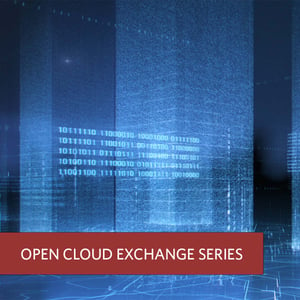
The Open Cloud Exchange: Hybrid Cloud and Multicloud Deployment Tips
The Open Cloud Exchange® (OCX) enables enterprises to customize their interconnection use cases in support of digital transformation, cloud adoption, agility, cost reduction and streamlined operations – all with superior performance, reliability and security. This third blog in the OCX series puts a finer point on operational excellence.
“The new reality is that flexibility, adaptability and resiliency are the business attributes that will matter most. Many organizations are not yet wired for this. The pandemic-driven IT modernization is a continuation of the enterprise shift from on-premises legacy IT to more agile cloud technologies in third-party data centers,” says Rich Miller of Data Center Frontier.¹ While modernizing through colocation is an excellent first step, the OCX and interconnection help you strengthen these essential business attributes.
Tips for Open Cloud Exchange Interconnection Deployment
The previous OCX blog describes interconnection scenarios and discusses cloud strategy, deployment location, single and dual ports, cost, speed and management. Let’s keep going with deployment tips, focusing here on flexibility, adaptability and resiliency:
- Business requirements drive every decision. Before you decide on a deployment strategy, meet with the OCX solution architects to discuss growth objectives, customer service goals, the cloud services you’re using or want to use, redundancy/availability, required latency, and so on. After they understand the big picture, the architects will create a custom network design that details ports, connections and routing. You’ll see how the network looks and how it supports your operating objectives. In the future, when requirements for your hybrid cloud or multicloud environment change, you’ll follow a similar process to improve the design and deploy it in minutes or hours, depending on the scope of change.
- Simplicity, ease and performance determine connection choices. Cross-connects (physical fiber cables) and Ethernet virtual connections (EVCs) are part of your network design conversation. Cross-connects are used in some situations – to meet a CSP requirement or for 100G bandwidth, for example. More common, after opening a single port and connecting through the OCX, you can provision multiple EVCs, connect to other parties in the OCX within one or more regions and manage all of your interconnections through the OCX portal. In addition to being simple and easy to deploy, the OCX is fully redundant with fail-over capabilities.
- The interconnection ecosystem. Enterprises derive great value by connecting with other exchange members. Today, connecting to one CSP may be your priority, and connecting to CSPs in the OCX is 100% automated. Future operational excellence may depend on fast, reliable, low-latency access to additional CSPs, network service providers, content delivery networks (CDNs), managed service providers, systems integrators and other enterprises. The OCX provides access to CSPs and CDNs in most regions, and access to other service providers through established inter-market software-defined network (SDN) connectivity.
Not All Colocation and Interconnection Providers Are Equal
Look closely at facilities before you choose a provider. It’s not easy to move a colocation deployment, so you’ll want to make this important decision with current and future requirements in mind. In particular, consider the following capabilities:
- Contiguous growth. Dip a toe in the colocation waters by renting a single cabinet. Then, as your business grows, you can add cabinets, set up your own cage or scale in other ways. Verify that a facility can support contiguous growth with cabinets, cages, suites and even floors. Another option for expansion? Cross-connects within a building or campus.
- Interconnection logistics. Understand how the provider will get you to the cloud. Direct access ensures the highest performance, and direct access requires a “native onramp” for each CSP. OCX native onramps eliminate unnecessary performance penalties and costs associated with traffic traversing the internet – with multiple hops and multiple vendors – before reaching a CSP access point. Also, confirm a colocation provider’s nationwide campus is connected via SDN to ensure optimal access to multiple regions.
- Security, access and support. Verify that in-house security is provided by facility employees and that other security measures such as biometrics and cameras are in use. Be sure your IT people can access your space 24x7x365. Limited access hours and/or inefficient access procedures could delay essential maintenance or upgrades. Also, explore the facility’s remote hands capabilities as an alternative to, or backup for, your team. A remote hands team can rack and stack equipment, run cables, respond to emergencies and perform other tasks on your behalf.
- Regulatory compliance. Request a list of a data center facility’s certifications, especially as they relate to industry-specific regulatory requirements.
Interconnection for Operational Excellence and Business Continuity
As you evaluate data center colocation and interconnection providers, step back and consider how the entire solution improves your flexibility, adaptability and resiliency. Every aspect of the people, processes, technology and facilities should contribute to this goal.
For an OCX overview, read the first blog in the OCX series: “The Open Cloud Exchange: What Is It and Why Use It?” For a deeper dive into technical aspects of OCX deployments, check out the OCX user guide. And, keep an eye out for upcoming OCX blogs covering FAQs and new Open Cloud Exchange capabilities.
¹ Data Center Frontier, The Eight Trends That Will Shape the Data Center Industry in 2021, January 6, 2021.










